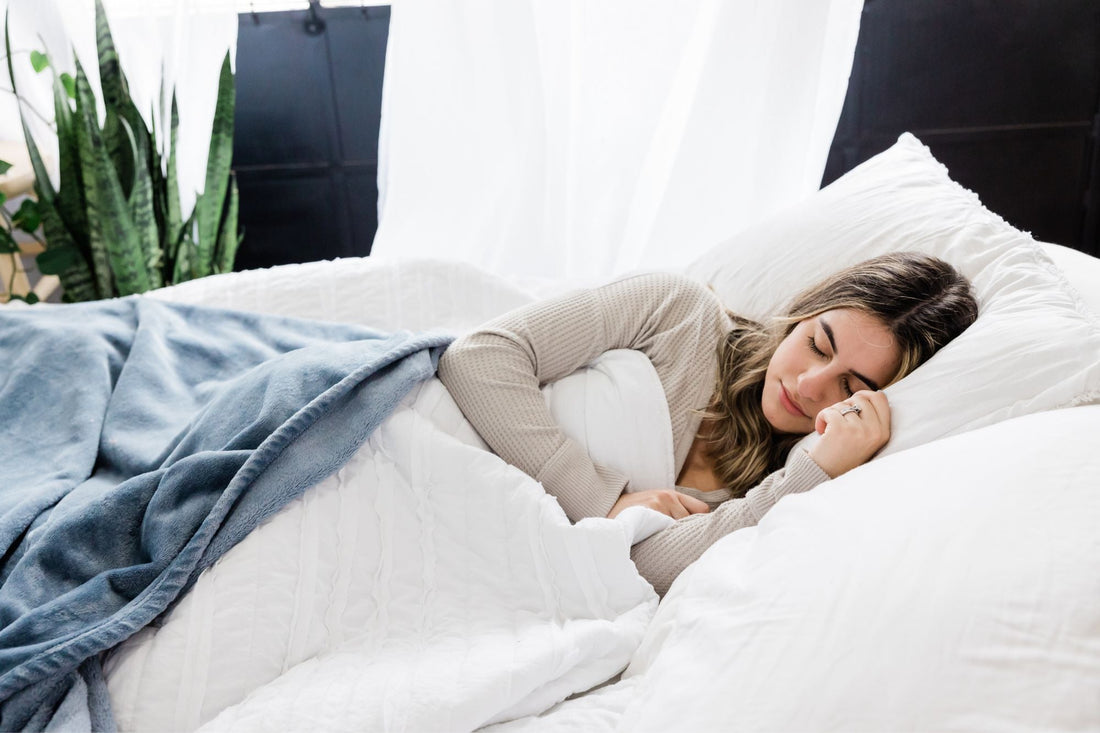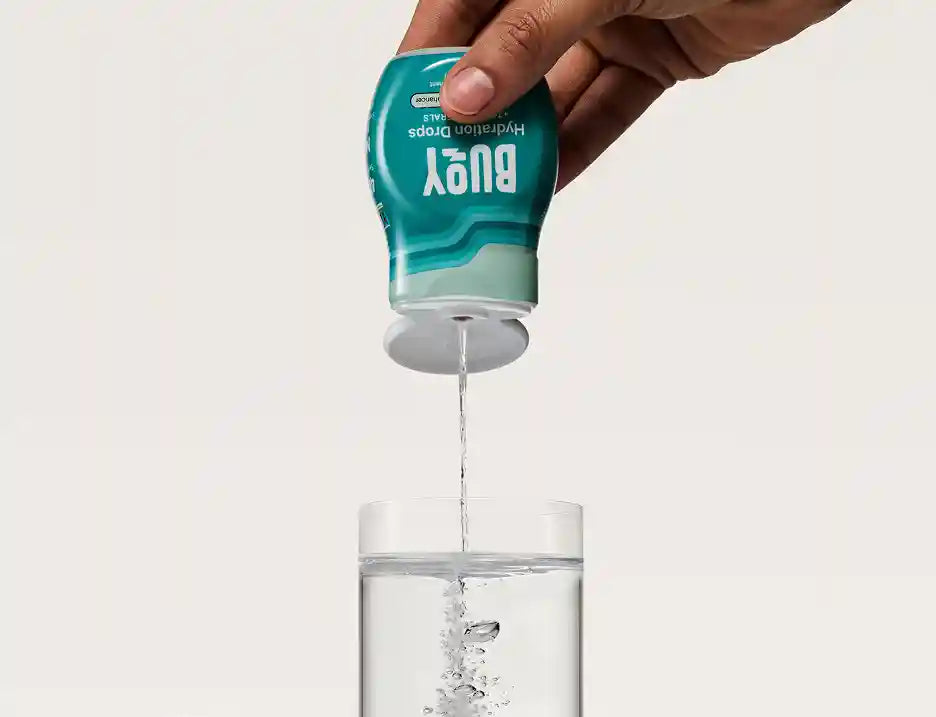
POTS and Sleep: Improving Sleep Quality
Imagine lying in bed, exhausted but unable to drift off to sleep. Your heart races, your mind won't quiet down, and no position feels comfortable.
For many people with Postural Orthostatic Tachycardia Syndrome (POTS), this frustrating scenario is all too familiar. The complex relationship between POTS and sleep can create a vicious cycle, where poor sleep worsens symptoms, and symptoms make sleep difficult.
But there’s hope. Understanding how POTS affects sleep and implementing targeted strategies can help you break this cycle and achieve the restorative rest your body craves.
In this guide, we’ll explore POTS sleep tips and strategies for managing sleep with POTS. You’ll discover practical ways for improving sleep quality with POTS, from creating the ideal sleep environment to managing symptoms before bedtime.
Essential Takeaways:
- Sleep Quality Directly Impacts POTS Symptoms: Poor sleep can exacerbate POTS symptoms, while improving sleep quality can help manage the condition more effectively. Prioritizing good sleep hygiene is a crucial component of POTS management.
- Implementing POTS Sleep Tips into Your Routine: What works for one POTS patient may not work for another. Experimenting with different sleep-enhancing techniques, from adjusting sleeping positions to managing pre-bedtime routines, can help you find the most effective approach for your individual needs.
Quality sleep is crucial for everyone's health and well-being, but for those with POTS, it can be a game-changer in managing symptoms and improving overall quality of life. Let’s dive into the topic of POTS and sleep and uncover the keys to unlocking better rest and brighter days.
- How POTS Affects Sleep
- Creating a Sleep-Friendly Environment
- Sleep Strategies for POTS Patients
- Safe Sleep Aids for POTS Patients
- Achieve Better Sleep with POTS
How POTS Affects Sleep
Postural Orthostatic Tachycardia Syndrome (POTS) can significantly impact sleep quality and quantity. Many POTS patients struggle with various sleep-related issues that can make restful nights elusive. Understanding these challenges is the first step toward improving sleep:
- Tachycardia and Palpitations: The rapid heart rate characteristic of POTS can persist even when lying down, making it difficult to relax and fall asleep. Some patients report feeling their heartbeat prominently, which can be distracting and anxiety-inducing.
- Orthostatic Intolerance: While this symptom is most noticeable when standing, some POTS patients experience dizziness or lightheadedness even when lying down, disturbing sleep.
- Temperature Regulation Issues: Many POTS patients struggle with poor temperature control, leading to night sweats or feeling uncomfortably cold, both of which can disrupt sleep.
- Nocturia: Frequent nighttime urination is common in POTS, often due to fluid retention during the day being released at night. This can lead to multiple sleep interruptions.
- Anxiety and Racing Thoughts: The physical symptoms of POTS can trigger anxiety, making it hard to quiet the mind at bedtime. Additionally, concerns about managing symptoms the next day can lead to racing thoughts.
- Chronic Fatigue: Paradoxically, the extreme fatigue experienced by many POTS patients can make it harder to maintain a regular sleep schedule, potentially leading to a disrupted circadian rhythm.
- Pain and Discomfort: Some POTS patients experience chronic pain or generalized discomfort, which can make finding a comfortable sleeping position challenging.
Understanding how these symptoms interact with sleep can help you and your healthcare provider develop targeted strategies for improvement (1).
Creating a Sleep-Friendly Environment
Your bedroom environment plays a crucial role in promoting quality sleep. For POTS patients, optimizing this space can make a significant difference in managing symptoms and improving rest. Here are some tips for creating a sleep sanctuary.
Temperature Control
Maintaining an optimal temperature is crucial for POTS patients, who often struggle with temperature regulation. Aim for a cool room temperature between 60-67°F (15-19°C). This range promotes better sleep by facilitating the natural drop in core body temperature that occurs during rest.
Use breathable, moisture-wicking bedding to help regulate body temperature throughout the night. Materials like bamboo, cotton, or special cooling fabrics can be particularly beneficial. Consider layering your bedding so you can easily adjust as needed.
A fan can serve multiple purposes: it provides air circulation to prevent stuffiness, offers white noise to mask disruptive sounds, and can help cool you down if you experience night sweats.
Lighting
Light plays a crucial role in regulating our circadian rhythms. Install blackout curtains or shades to block out external light, which is especially important for daytime rest or light-polluted areas..
In the evening, use dim, warm lighting to signal to your body it's time to wind down. Consider installing dimmer switches or using low-wattage bedside lamps. This gradual reduction in light helps stimulate melatonin production, the hormone responsible for sleep.
Avoid blue light from screens at least an hour before bed, as it can suppress melatonin production. If you must use devices, enable blue light filtering apps or wear blue light blocking glasses.
Noise Management
For POTS patients who may be sensitive to stimuli, managing noise is essential. If external noises are an issue, consider using a white noise machine or app. These devices create a consistent background sound that can mask sudden noises that might otherwise disturb your sleep.
Soft earplugs can be helpful if you're particularly sensitive to noise. Look for comfortable, moldable options designed for sleep use. Remember to clean them regularly to maintain hygiene.
Ensure windows and doors are properly sealed to minimize outside sounds. This might involve adding weatherstripping or using draft stoppers under doors.
Comfortable Bedding
Invest in a supportive mattress and pillows that help maintain proper alignment. This is particularly important for POTS patients who may need to experiment with different sleeping positions to manage symptoms.
Choose breathable, natural fabrics for sheets and pajamas. Materials like cotton, bamboo, or silk can help regulate temperature and reduce night sweats. Consider using a body pillow for additional support and comfort.
Elevate the Head of the Bed
Many POTS patients find relief by slightly elevating the head of their bed (about 4-6 inches). This can help manage blood flow and reduce symptoms like dizziness and tachycardia when lying down. Use bed risers or a wedge pillow to achieve this elevation safely and comfortably.
Declutter and Organize
A tidy, organized bedroom can promote a sense of calm and reduce stress. Implement a system to keep your space neat, such as using storage bins or a closet organizer. This can help create a more peaceful environment conducive to rest.
Keep medical supplies neatly stored but easily accessible if needed during the night. Consider a bedside organizer or drawer for items you might need, ensuring they're within reach without cluttering your space.
Air Quality
Use an air purifier to remove allergens and improve overall air quality. This can be particularly beneficial for POTS patients who may have sensitivities or allergies that affect their breathing and sleep quality.
Consider adding plants known for their air-purifying properties, like snake plants or peace lilies. Not only do they improve air quality, but they can also add a calming natural element to your bedroom decor.
Aromatherapy
Calming scents like lavender or chamomile can promote relaxation and potentially improve sleep quality. Use a diffuser with essential oils or a lightly scented pillow spray. Be cautious with scents, as some POTS patients may be sensitive to strong odors.
Create a Relaxation Corner
Designate a small area in your bedroom for pre-sleep relaxation activities. This could include a comfortable chair for reading, a space for gentle stretching, or a cushion for meditation. Having a dedicated space for winding down can help signal to your body and mind that it's time to prepare for sleep.
Personalize Your Sleep Environment
By thoughtfully crafting your sleep environment, you can create a space that supports better rest and helps manage POTS symptoms. Remember, small changes can make a big difference in your sleep quality (2,3,4).
Experiment with these suggestions to find what works best for you, and don't hesitate to consult with your healthcare provider about how to optimize your sleep environment for your specific needs.

Creating a calm, clutter-free sleep environment with soothing colors and natural materials can significantly improve sleep quality for POTS patients.
Sleep Strategies for POTS Patients
Your bedroom environment plays a crucial role in managing sleep with POTS. For people with POTS, optimizing this space can make a significant difference in managing symptoms and improving rest. Here are some key POTS sleep tips to help you achieve better rest.
Establish a Consistent Bedtime Routine
Set a regular sleep schedule, going to bed and waking up at the same time daily. Create a calming pre-bed ritual such as gentle stretching, reading, or meditation to signal your body it's time to wind down. Consistency helps regulate your body's internal clock, which is especially important for POTS patients.
Manage Fluid Intake
Maintain hydration throughout the day, then taper off fluid intake 2-3 hours before bedtime to reduce nighttime urination. Consider using Buoy’s Rescue Drops earlier in the day to support hydration without excess fluid volume.
Optimize Your Sleeping Position
Experiment with slightly elevating the head of your bed (4-6 inches) to help manage blood flow. Try sleeping on your left side, which may help reduce heart palpitations for some POTS patients. Finding the right position can significantly impact symptom management during sleep.
Practice Relaxation Techniques
Deep breathing exercises or progressive muscle relaxation can help calm your nervous system. Guided imagery or meditation apps can be useful tools for pre-sleep relaxation. These techniques can help counteract the heightened sympathetic nervous system activity often seen in POTS.
Manage Symptoms Before Bed
If prescribed compression garments, wear them during the day but remove them before bed to allow for better circulation. Perform gentle leg exercises or use a foam roller to help reduce blood pooling in the lower extremities. Addressing these POTS-specific concerns can lead to more comfortable sleep (2,3,4).
For more comprehensive guidance on managing POTS beyond sleep, check out our guide on Lifestyle Changes to Manage POTS. Many of these lifestyle adjustments can have a positive impact on your sleep quality, as well.
Safe Sleep Aids for POTS Patients
While improving sleep hygiene and environment should be the first approach, some POTS patients may need additional help to achieve restful sleep.
Always consult with your healthcare provider before starting any new sleep aid, as POTS can complicate the use of certain medications. Here are some options to discuss.
Natural Remedies
Melatonin supplements may help regulate sleep-wake cycles. Start with a low dose (0.5-1mg) and adjust as needed. Magnesium can promote relaxation and may help with muscle tension.
Herbal teas like chamomile, valerian root, or passionflower may have calming effects. These natural options are often well-tolerated by POTS patients.
Over-the-Counter Options
Some OTC sleep aids contain antihistamines like diphenhydramine or doxylamine. These should be used cautiously and sparingly in POTS patients, as they can worsen symptoms like dry mouth and urinary retention. Always consult with your healthcare provider before using these.
Prescription Medications
Your doctor may consider prescribing sleep medications if other methods are ineffective. Options might include low-dose antidepressants with sedating properties or non-benzodiazepine sleep medications.
These should be used under close medical supervision due to potential interactions with other POTS medications and symptoms.
Alternative Therapies
Acupuncture or acupressure may help some patients with sleep and symptom management. Cognitive Behavioral Therapy for Insomnia (CBT-I) can be highly effective and is often recommended as a first-line treatment for chronic insomnia.
These non-pharmacological approaches can be particularly beneficial for POTS patients.
Cautions and Considerations
Avoid alcohol as a sleep aid. Be cautious with CBD or cannabis products, as these can interact with medications and affect blood pressure. Always start with the lowest effective dose of any sleep aid to minimize side effects.
Some POTS patients find that a small amount of an electrolyte solution like Buoy in water before bed helps manage overnight dehydration without excessive fluid intake.
Your Overall POTS Management
Remember, the goal is to find a safe, effective solution that improves your sleep without exacerbating POTS symptoms. Work closely with your healthcare provider to develop a personalized approach to sleep management.
Managing your overall POTS symptoms is crucial for better rest. For additional strategies, explore our article on Expert Tips on Managing POTS Symptoms, which complements the sleep-specific advice provided here.
Achieve Better Sleep with POTS
Having POTS doesn’t mean you have to resign yourself to poor sleep. By implementing the strategies and tips outlined in this guide, you can take significant steps toward improving sleep quality with POTS and enhancing your overall well-being.
Remember, everyone’s experience with POTS is unique, so be patient as you discover what works best for you.
Start Small and Monitor Changes
Start by making small, manageable changes to your sleep environment and routine. Pay attention to how these adjustments affect your symptoms and sleep quality. Over time, you'll develop a personalized approach that helps you manage your POTS symptoms while getting the restorative sleep your body needs.
Consult Your Healthcare Provider
Don't hesitate to reach out to your healthcare provider if you continue to struggle with sleep issues. They can offer personalized advice and, if necessary, explore additional treatment options tailored to your specific needs.
Explore More POTS Resources
Want to learn more about managing POTS and improving your quality of life? Be sure to check out our other POTS resource guides. These comprehensive articles offer expert insights, practical tips, and in-depth information to help you navigate life with POTS more effectively.
Stay Hydrated with Buoy
Looking for ways to stay hydrated and manage your POTS symptoms? Explore Buoy’s range of electrolyte solutions. Our specially formulated drops can help you maintain proper hydration throughout the day, potentially easing some POTS-related challenges.
Shop Buoy's electrolyte solutions now and take a proactive step in managing your POTS symptoms.
Commit to Improving Sleep with POTS
Remember, better sleep is possible with POTS. By consistently applying these POTS sleep tips and strategies for managing sleep with POTS, you can work towards more restful nights and energized days.
Take the first step toward improving sleep quality with POTS by applying these strategies today. Your body—and your POTS symptoms—will thank you.

Buoy’s Digestion Drops offer a convenient way to enhance hydration and support digestive health. Adding these electrolyte drops to your water can be an easy step in managing POTS symptoms throughout the day.
References:
-
Bagai, K., Song, Y., Ling, J. F., Malow, B., Black, B. K., Biaggioni, I., Robertson, D., & Raj, S. R. (2011). Sleep Disturbances and Diminished Quality of Life in Postural Tachycardia Syndrome. Journal of Clinical Sleep Medicine, 7(2), 204–210. Retrieved
from https://www.ncbi.nlm.nih.gov/pmc/articles/PMC3077350/
-
Standing Up to POTS. (n.d.). Treating Insomnia. Retrieved from https://www.standinguptopots.org/livingwithpots/insomnia
-
Awareness for POTSies. (n.d.). Sleep Habits. Retrieved from https://www.awarenessforpotsies.org/bedtime-and-sleep
-
POTS UK. (n.d.). Important Lifestyle Changes: Sleep. Retrieved from https://www.potsuk.org/managingpots/sleep/
- Dysautonomia International. (n.d.). Lifestyle Adaptations for POTS. Retrieved from https://www.dysautonomiainternational.org/page.php?ID=44





